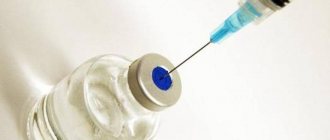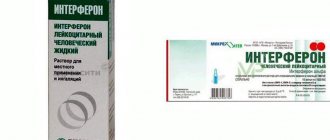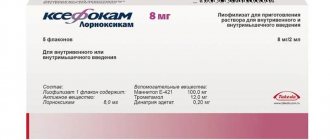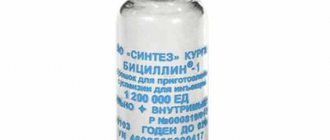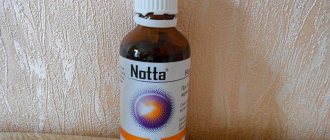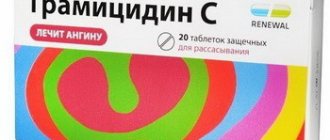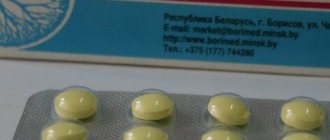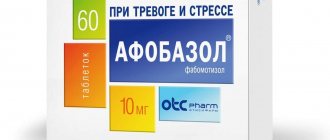Photo: gorzdravdv.ru
Photo: flemox.ru
Photo: tmltd.by
Photo: eapteka.ru
Bicillin-3 is a long-acting combination antibiotic. Active ingredients: a mixture of benzathine benzylpenicillin, benzylpenicillin sodium (or potassium) salt and benzylpenicillin novocaine salt. The drug retains its average concentration for 6-7 days.
You need to know that Bicillin-3 reduces the effect of oral contraceptives and ethinyl estradiol. These combinations may result in breakthrough bleeding. Dispensed with a doctor's prescription!
Composition of the drug
The presented product has several generations, which include various combinations of penicillin salts:
- The drug "Bitsillin-1" belongs to the first generation. Which contains only benzathine benzylpenicillin salts. In pharmacies you can find two dosages: 600,000 and 1,200,000 units (action units).
- The medicine "Bitsillin-3" belongs to the second generation. It contains three salts: benzathine benzylpenicillin, sodium benzylpenicillin and novocaine benzylpenicillin. Dosing also has two gradations at once: 400,000 and 200,000 units. Many people are interested in how to dilute Bicillin-3 according to the instructions.
- The product "Bitsillin-5" belongs to the latest generation, its composition has been adjusted. Now the powder includes benzylpenicillin benzathine and novocaine salt. The medicine is released in only one dosage. It is important to find out in advance how to dilute Bicillin 5.
Release form, composition and packaging
The powder for preparing a suspension for intramuscular administration is white or white with a slightly yellowish tint, forming a stable suspension when water is added.
| 1 fl. | |
| a mixture of benzathine benzylpenicillin, benzylpenicillin sodium (or potassium) salt and benzylpenicillin novocaine salt | 600 thousand units |
| -»- | 1.2 million units |
Bottles with a volume of 10 ml (10) - cardboard packs. Bottles with a volume of 10 ml (50) - cardboard boxes.
Characteristics of this medication
Any type of this medicine is produced in identical bottles with a capacity of 10 milliliters. The package contains fifty bottles. Inside there is a homogeneous powder, distinguished by a white color. The powder has virtually no odor. It tastes bitter. Directly after contact with water, as a rule, it takes on a homogeneous structure and forms a stable suspension. If the resulting solution is not administered within one hour, its properties change. The solution turns out to be loose, with many different small lumps, which makes subsequent administration impossible.
Is Bicillin diluted with novocaine? We'll talk about this below.
The cost of this antibiotic is very low. Currently, Bicillin-1 has almost gone out of circulation and has been replaced by the almost similar Bicillin-5. But if you manage to find it, then the average cost for 1 bottle of this salt will be ten rubles. “Bitsillin-3” and “Bitsillin-5” differ slightly in the price category, the cost ranges from thirty to fifty rubles per bottle.
How to dilute Bicillin with water is not indicated in the instructions.
The shelf life must be indicated on each bottle. The duration of possible use is three years. It is advisable to store the medicine at a temperature of eight to fifteen degrees in a protected and dark place. If these conditions are violated, the active ingredient may lose its properties.
Patients often ask how to inject and dilute Bicillin. Let's figure it out.
The mechanism of action of this drug
The pharmacodynamics of this drug are the same and do not depend in any way on the generation used. The drug has a bactericidal effect on many strains thanks to beta-lactams. These particles act as inhibitors of peptidoglycan synthesis. In the case of the action of the drug "Bicillin", beta-lactams can be integrated into the synthesized genetic chain and block further production.
Peptidoglycan is a complex protein that is part of the protective shell of many bacteria. Without this protein, the cell is not able to protect itself and function normally. Therefore, it is quickly detected by macrophages of the human body, and the pathogenic agent immediately lends itself to lysis, that is, breakdown through enzymes.
The drug in question can have a great effect on gram-positive flora (that is, staphylococcus, streptococcus, diphtheria bacillus, anthrax pathogen, and so on), inhibiting the growth of anaerobic organisms. And in some situations it is sensitive to gram-negative organisms (meningococci, Treponema pallidum and gonorrhea).
Pharmacokinetics is also an important link. Since it is the slow withdrawal of the drug that makes it indispensable in the process of preventing streptococcal complications.
Therapeutic concentrations in the blood are detected already in the first hours immediately after the injection. Maximum numbers can be recorded within twelve hours. It is important that the drug “Bicillin-3” remains in a therapeutic dose in the blood for at least seven days after administration, and “Bicillin-5” can persist for twenty-eight days. This occurs due to the slow biotransformation of the drug and its gradual release. This antibiotic is excreted by the kidneys as inactivated forms.
How to breed Bicillin-3 is often found out.
Side effects
If used incorrectly (that is, not following the instructions), Bicillin-5 can cause negative reactions, for example:
- Anemia.
- Thrombocytopenia.
- Leukopenia.
- Reduced blood clotting;
- Skin rashes.
- Eosinophilia.
- An inflammatory lesion of the skin that occurs as a result of exposure to damaging factors.
- Angioedema.
- Anaphylactic shock.
- Migraine.
- Pain in the joints.
- Temperature increase.
- Inflammation of the oral mucosa.
Indications for use of the drug
During the long existence of antibiotics, bacterial microflora has already managed to mutate more than once and develop resistance to their effects. In the case of this drug, bacteria have learned to produce beta-lactamases, which are capable of breaking down beta-lactams. To protect against inactivation, scientists add sulbactam with tazobactam and clavulanic acid to penicillins. Since the agent in question does not have any protection, it is most often used to combat the consequences of the activity of beta-hemolytic streptococci and Treponema pallidum.
Indications for use include syphilis along with gonorrhea, erysipelas, severe scarlet fever, prevention of rheumatism after severe tonsillitis, tonsillitis and leishmaniasis. Often this drug is used to treat glomerulonephritis and streptococcal carditis. The advantage in the treatment of the above pathologies is given to Bicillin due to its long-term cumulative ability.
So, how to dilute Bicillin?
Bicillin prophylaxis
Bicillin prophylaxis is usually understood as a course of antibacterial therapy, which is aimed at treating and preventing the development of serious complications of tonsillitis.
The drug is recommended for use for:
- sepsis;
- rheumatism;
- diseases of the heart muscle;
- streptococcal shock;
- inflammation of the ear labyrinth and the development of otitis media;
- damage to the meninges in the form of meningitis and encephalitis;
- abscesses.
When completing the course, the risk of various pathologies decreases. Often an antibiotic is prescribed if it is difficult to make an accurate diagnosis. When the symptoms become obvious or the test results indicate the type of disease, the doctor will replace the medicine with another.
Diseases of the heart muscle.
Rules for using this drug
The instructions for use indicate the required dosage and the principle of administration. But she does not specify how to properly dilute Bicillin and how to inject the medicine. Considering that injections are often given at home, it is necessary to specify some details that are missing in the annotation. So, first, let’s clarify how to dilute Bicillin.
The preparations “Bicillin-1” and “-3” are diluted exclusively with saline or water for injection.
At the same time, the question is often asked how to dilute Bicillin-3 with novocaine.
Diluting the powder with novocaine is contraindicated. The drug "Bitsillin-5" is the only representative of these drugs that can be diluted with an anesthetic. But until the patient is eight years old, this is also not allowed.
Let's move on to the question of how to dilute and inject Bicillin-5. To do this, take 5 milliliters of solvent into a syringe, pierce the rubber cap with a needle and inject the product inside under pressure. Then shake the medicine for twenty seconds until the suspension is homogenized. Draw the prepared solution back into the syringe.
Your doctor will tell you what is the best way to dilute Bicillin.
Immediately after this, an injection is given. The injection is performed intramuscularly in the area of the upper outer quadrant, deep into the buttock. After inserting the needle, you should make sure that it does not fall into the vessel. To do this, pull the piston towards you. If blood does not enter the syringe, the solution is slowly injected.
Bicillin can be diluted with lidocaine to 10 ml.
The instructions for using the medicine indicate the average dosage of the drug. It must be remembered that the doctor will select the optimal dose of medication, taking into account the characteristics of the patient and his disease that needs to be dealt with. On average, the following dosages are used:
- When treating with Bicillin-1, 600,000 IU is used just once a week.
- The drug "Bicillin-3" is used at a dose of 300,000 IU on the first day, on the fourth day this dosage is doubled.
- The medicine "Bicillin-5" is used in the amount of 1.5 million IU once a month.
How to give an injection correctly
Bicillin solution is poorly soluble in water, and therefore is administered intramuscularly into the body. A syringe with a volume of 60 milliliters is used to administer the injection. The antibiotic is diluted in a bottle of 3 ml of water or isotonic saline solution. The components are thoroughly mixed.
To reduce the risk of hematoma formation, the doctor does not inject in the same place. It is not allowed to inject the solution into swollen parts from previous injections.
How to give an injection correctly.
Contraindications to the use of the drug
The main contraindication to the use of this medicine is the patient's individual intolerance to the components. Attention should be paid to the presence of an allergy to cephalosporins and sulfonamides in the anamnesis. They have a similar structure and principle of influence.
This medicine should not be used by sick people with bronchial asthma or those with hay fever. Particular attention should be paid to patients who suffer from other allergic pathologies (hay fever, food and contact allergies). This medicine is prescribed with caution to pregnant women, and also to sick people with chronic kidney failure and pseudomembranous colitis.
Drinking alcohol is also prohibited. If acetaldehyde enters the body, the effect of the drug is usually minimized or may be completely distorted. This will certainly slow down the achievement of the desired results and increase the risks of developing resistance.
Now we will find out what side effects are possible when using this remedy.
Analogs
"Phenoxymethylpenicillin"
Sintez, Russia Price from 19 to 40 rubles.
"Phenoxymethylpenicillin" is an antibacterial drug of the penicillin group. The drug is used to treat diseases of the oral cavity, skin, and soft tissues of an infectious nature. "Phenoxymethylpenicillin" is available in the form of powder for oral administration and tablets, the active ingredient of the drug is phenoxymethylpenicillin.
Pros:
- Low price
- Good drug tolerance
- Can be prescribed to children.
Minuses:
- Available with prescription
- May provoke the development of superinfection
- An allergy to the main component of the drug is possible.
Side effects from the use of this medicine
As the instructions for use of the drug "Bicillin" indicate, the main side effect is the development of an allergic reaction, which can manifest itself in the form of itching, urticaria, Quincke's edema, anaphylactic shock and bronchial spasms. Rarely, a reaction from the functioning of the hematopoietic system can be observed. In this case, patients note coagulopathy along with anemic syndrome, thrombocytopenic purpura and leukopenia.
Common symptoms associated with taking antibiotics are the appearance of headache, unmotivated weakness, diarrhea, dysbiosis, glossitis and stomatitis, joint pain and fever of unknown origin. Long-term use of an antibiotic without complying with the specified dosage and frequency of use can lead to the development of superinfections due to the development of resistance of pathogenic bacteria to antibacterial drugs from the beta-lactam category.
special instructions
When using Bicillin-3, you need to consider the following points:
- If signs of individual intolerance to the drug occur, treatment should be stopped immediately.
- The antibacterial drug cannot be injected into a vein, subcutaneous space, or joints. Oral use of the drug is prohibited. Intravenous administration contributes to inflammation of the vessel, the appearance of feelings of depression and anxiety. Possible temporary loss of vision. To prevent the suspension from entering the capillary, you need to pull the syringe plunger. Blood should not be absorbed.
- When treating syphilis and gonorrhea, microbiological and serological tests are performed before using an antibiotic and for 3 months after the end of therapy.
- The administration of an antibiotic often leads to fungal infections. The treatment regimen is supplemented with vitamins B and C. If necessary, antifungal drugs are used, for example, Nystatin. For common infections, Fluconazole is prescribed.
- The antibiotic is administered in doses prescribed by the doctor. Do not interrupt the course of treatment after the symptoms disappear. Early cessation of therapy or use of reduced doses leads to the development of resistance.
- If symptoms of anaphylactic shock are detected, Norepinephrine and corticosteroids are administered. In severe cases, the patient is connected to a ventilator. Immediate medical attention is also required if Quincke's edema develops.
Use during pregnancy and lactation
Pregnant women are prescribed antibiotics only if there are strict indications. During the treatment period, you should not feed your baby breast milk.
Drug interactions
The consequences of the interaction of Bicillin with the following drugs were studied:
- Diuretics, non-steroidal anti-inflammatory drugs. Such combinations help reduce the glomerular filtration rate and increase the level of benzylpenicillin in the blood.
- Antibiotics with bacteriostatic action (macrolides, tetracyclines). The drugs mutually reduce each other's effectiveness.
- Bactericidal agents. Mutual enhancement of action is observed. There is an increased likelihood of side effects, especially in children.
- Hormonal contraceptives based on ethinyl estradiol. The contraceptive effect of the pills is reduced, and the likelihood of uterine bleeding increases.
- Allopurinol. Combining medications increases the risk of allergies.
Impact on the ability to drive vehicles and complex mechanisms
The drug does not affect the state of the nervous system. It is possible to use an antibiotic when driving a car or using other mechanisms.
Features of the use of this drug in different population groups
Children, pregnant women, and in addition, elderly people have their own physiological individual characteristics. Penicillins are not included in the list of teratogenic factors. But their use is highly undesirable. Therefore, there are strict instructions during pregnancy. This drug is prescribed only if the benefits to the mother far outweigh the risks to the developing fetus. Dosage is selected individually by the doctor, taking into account all the features.
The lactation period is a contraindication, since a small concentration of the drug passes into breast milk. This can cause allergic reactions or the development of resistance to bacterial flora.
It is recommended to prescribe only Bicillin-5 to such a contingent as children. The difference in dosage directly depends on age. For children from three to eight years old, it is recommended to administer 600,000 IU just once every three weeks. After the child reaches eight years of age, the dosage is doubled. It is recommended to administer 1.2 million IU every four weeks. It is allowed to increase the dose to 1.5 million units.
People over sixty years of age are recommended to reduce the adult dosage by half, since during this period the half-life process slows down, thereby enhancing pharmacodynamics.
Reviews from doctors and patients about Bicillin
Since this drug has been on the pharmaceutical market for a long time, you can read a lot of reviews about its effectiveness on the Internet. It is worth noting that every doctor managed to try this drug in action.
Based on the reviews of experts, the drug in question is very effective in the treatment of chronic diseases that are caused by flora sensitive to beta-lactams, because they require long-term treatment. Doctors report that if at first Bicillin had pronounced adverse reactions, the new generation is able to cure this or that disease with rare negative manifestations.
This is confirmed directly by the patients themselves, who report that during therapy with this medication they easily tolerated all the side effects, which were mainly expressed in headaches and slight weakness.
Next, we will consider the drug “Bicillin 3” in more detail.
Why inject Bicillin after a sore throat?
Tonsillitis is one of the serious diseases that can lead to adverse consequences. Often, with delayed treatment, the patient experiences complications not only in neighboring tissues, but also in some organs: heart, kidneys, brain, ears.
To prevent the development of complications, doctors prescribe bicilin prophylaxis after a sore throat. This drug belongs to the penicillin group of antibiotics. The main advantage of the medicine is its long-lasting effect on the body.
Many patients do not understand why and why doctors prescribe this medication. Experts say that it is enough to administer Bicillin 3 intramuscularly once and a positive result will be felt within a few hours. This property is due to the fact that the active component of the drug is not removed from the blood plasma. Therefore, the effect is observed within 3-4 weeks after administration.
If we talk about Bicillin 5, then this remedy is used when adverse effects appear. The active ingredients cope with diseases of the heart muscle, sepsis and streptococcal shock. It is often prescribed to children under 12 years of age.
When tonsillitis occurs, bicillin prophylaxis is not always carried out. The drug is recommended for use only in cases where treatment was started untimely and the sore throat was complicated by other diseases.
The benefits of Bicillin injections after a sore throat.
"Bicillin-3": indications for use
The drug "Bicillin-3" is usually prescribed for the treatment of various kinds of infectious diseases caused by organisms sensitive to the effects of the antibiotic. This antibacterial drug is usually prescribed by doctors in a number of the following situations:
- In the presence of acute or chronic tonsillitis.
- Against the background of infection of wound surfaces.
- If a person has scarlet fever.
- Against the background of rheumatoid arthritis and arthrosis.
- If you have a sore throat.
- As part of the prevention of rheumatism.
- Against the background of erysipelas.
- In the presence of syphilis, as well as yaws.
The drug in question can be used to treat infectious pathologies in poultry (for example, chickens), and also in cattle.
Therapeutic therapy for syphilis
Primary or secondary syphilis is treated by administering 1.8 million units of Bicillin-3. 7 intramuscular injections are given according to the following scheme: the dosage of the first and second injections is 600,000 units, unless prescribed otherwise. The interval between injections is 1 day. Next, it is recommended to inject the antibiotic twice for 7 days.
It is worth checking with your doctor how much to administer the drug for other diseases if you have prescribed an antibiotic in a different dosage of the active substance.
Medicinal properties
The mechanism of action of Bicillin-3 is based on inhibition of the growth and numerical reproduction of pathogenic organisms. Thus, this product effectively copes with gram-positive, gram-negative and anaerobic organisms. The activity of the drug in question against pathogens of fungal pathologies, poliomyelitis, smallpox and influenza has not been detected.
As Bicillin 3 enters the body, hydrolysis is observed with the gradual release of the main active component. With a one-time administration of this antibiotic, it is possible to maintain its therapeutic concentrations for seven days. The highest concentration is observed after twenty-four hours from the injection. The penetration of benzathine benzylpenicillin into physiological fluid is significantly higher than into tissue. The drug can cross the placenta and is detected in breast milk. The medicine, as a rule, is partially transformed, after which it is excreted by the genitourinary system.
pharmachologic effect
A combined antibacterial drug of the penicillin group of prolonged action, destroyed by penicillinase. The mechanism of action is based on a violation of the synthesis of peptidoglycan - a mucopeptide of the cell wall, which leads to inhibition of the synthesis of the cell wall of the microorganism, suppression of the growth and reproduction of bacteria. Active against gram-positive bacteria: Staphylococcus spp. (non-penicillinase-forming), Streptococcus spp. (including Streptococcus pneumoniae), Corynebacterium diphtheriae, Bacillus anthracis; gram-negative bacteria: Neisseria gonorrhoeae, Neisseria meningitidis, Actinomyces israelii. The drug is also active against Treponema spp., anaerobic spore-forming bacilli, leishmania. Staphylococcus spp., which produce penicillinase, are resistant to the drug.
